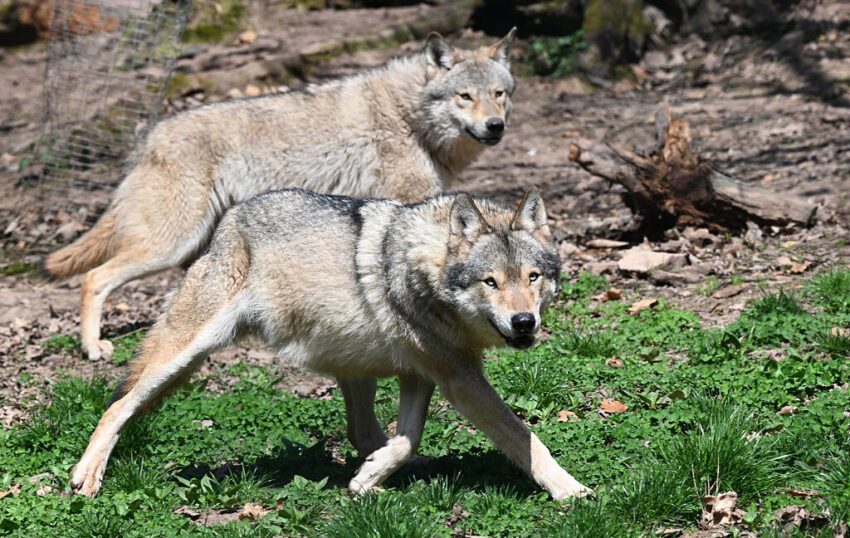
even with protections wolves still fear humans Recent research challenges the notion that wolves have become fearless in the presence of humans, despite changes in their legal protections across Europe.
even with protections wolves still fear humans
Legal Changes and Their Implications
In May 2025, the European Parliament made a significant decision to alter the legal status of wolves in the European Union, shifting them from being classified as “strictly protected” to “protected.” This change allows member states to permit hunting under specific conditions, particularly aimed at safeguarding livestock. Proponents of this legal adjustment argued that a growing “tolerance of modern society towards wolves” has led to the emergence of “fearless wolves” that no longer exhibit fear of human presence.
However, this assertion has been met with skepticism. Michael Clinchy, a zoologist at Western University in London, Canada, stated, “Regulators made it clear though that there is no scientific evidence to back this up.” In response to this claim, Clinchy and his team conducted a pioneering study aimed at investigating whether wolves had indeed lost their fear of humans. Their findings were conclusive: “We proved there is no such thing as a fearless wolf.” This research not only challenges existing narratives but also raises questions about the implications of the legal changes on wolf populations and their interactions with humans.
The Historical Context of Wolf Populations
The relationship between humans and wolves has been fraught with tension for centuries. The archetype of the “big bad wolf” is prevalent in numerous myths and fables, with “Little Red Riding Hood” being one of the most iconic examples. This cultural narrative, combined with the real threat posed by wolves to livestock, led to extensive hunting and persecution of these animals. By the mid-20th century, aggressive hunting practices had pushed wolf populations to the brink of extinction in Western and Central Europe.
During this period, human-wolf encounters became exceedingly rare, and the myth of the big bad wolf began to fade into the background of cultural consciousness. However, the tide began to turn in the 1970s when wolves were designated as a protected species across Europe and North America. This legal protection allowed wolf populations to rebound and reoccupy some of their former habitats, leading to a complex interplay between humans and wolves.
Rebounding Populations and Human Perceptions
The recovery of wolf populations has sparked a renewed interest in their behavior and interactions with humans. As wolves began to reclaim their territories, many communities found themselves grappling with the implications of living in proximity to these apex predators. The resurgence of wolves has reignited debates about wildlife management, conservation, and the balance between protecting livestock and preserving natural ecosystems.
Despite the legal protections, the fear of wolves remains deeply ingrained in some communities. Farmers and livestock owners often express concerns about the potential threats posed by wolves to their animals. This fear can lead to calls for hunting and culling, even in the face of scientific evidence suggesting that wolves do not pose a significant threat to livestock when proper management practices are in place.
The Study: Methodology and Findings
To address the claims regarding fearless wolves, Clinchy and his team designed a comprehensive study that aimed to assess the behavioral responses of wolves to human presence. The study involved observing wolves in various environments, including areas where they had frequent encounters with humans and regions where human interaction was minimal.
The researchers utilized a combination of field observations and experimental setups to gauge the wolves’ reactions. They measured variables such as flight distance, stress hormone levels, and overall behavioral responses to human stimuli. The results were striking: wolves consistently exhibited signs of caution and avoidance when confronted with human presence, regardless of their previous exposure to humans.
Implications of the Findings
The findings of Clinchy’s study have significant implications for wildlife management and conservation efforts. The notion that wolves have become fearless could potentially justify increased hunting and culling practices, undermining the progress made in wolf conservation. By demonstrating that wolves retain a natural wariness of humans, the study supports the argument for maintaining strict protections for these animals.
Furthermore, the research highlights the importance of understanding animal behavior in the context of conservation. Misconceptions about wildlife can lead to misguided policies that may harm populations rather than protect them. The study serves as a reminder of the need for evidence-based decision-making in wildlife management.
Stakeholder Reactions
The study’s findings have elicited a range of reactions from various stakeholders, including conservationists, farmers, and policymakers. Conservationists have welcomed the research as a validation of their efforts to protect wolf populations. They argue that a deeper understanding of wolf behavior can lead to more effective conservation strategies that balance the needs of both wildlife and human communities.
On the other hand, some farmers and livestock owners remain skeptical. Many express concerns that the study does not adequately address the realities of living alongside wolves. They argue that while wolves may exhibit caution, the potential for livestock predation still exists, and this risk must be managed through hunting or other means.
Policy Considerations
The legal changes regarding wolf protections have prompted discussions about the need for nuanced policies that consider both conservation goals and the concerns of local communities. Policymakers face the challenge of balancing the interests of various stakeholders while ensuring the long-term survival of wolf populations. This may involve implementing measures such as compensation programs for livestock losses, community education initiatives, and targeted management strategies that allow for sustainable coexistence.
Conclusion
The recent study by Clinchy and his team sheds light on the complex dynamics between wolves and humans, challenging the narrative of fearless wolves. As wolf populations continue to recover and expand their territories, it is crucial to base wildlife management policies on scientific evidence rather than misconceptions. Understanding the natural behaviors of wolves can inform more effective conservation strategies and foster coexistence between humans and these majestic predators.
As society grapples with the implications of these findings, it is essential to engage in open dialogues that consider the perspectives of all stakeholders involved. The future of wolves in Europe hinges on our ability to navigate these complexities and develop policies that respect both wildlife and human interests.
Source: Original report
Was this helpful?
Last Modified: October 21, 2025 at 9:36 pm
3 views















